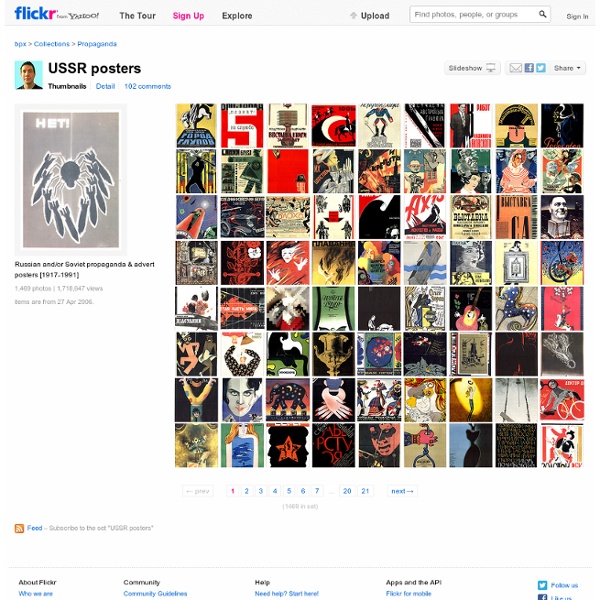



soviet roadside bus-stops The Soviet Roadside Bus-stop Departure from the common and boring , Next stop the wild and crazy For the most part Soviet architecture and design is remembered for its heavy block buildings and functionally Spartan designs. Its overpowering desire for conformity left little room for individual creative freedom. A notable exceptions to this is in the transportation sector. The roadside bus stop serves a simple purpose – to show where the bus will stop and to provide some comfort and shelter for waiting passengers. Sadly, with the breakup of the Soviet Union many of the bus stops are quickly deteriorating from their original glory. Christopher Herwig Photography www.herwigphoto.com Homenaje ilustrado a True Detective por Javier Vera Ilustración Homenaje ilustrado a True Detective True Detective ostenta, por el momento, el título de ‘serie del año’. Sus 8 episodios han sido fuente de numerosas elucubraciones pero también han servido de inspiración para el trabajo de numerosos creativos –si no te lo crees, haz la prueba y teclea el nombre de la serie en la barra de búsqueda de Behance–. Este es el caso del ilustrador Javier Vera, que acaba de concluir una serie de ilustraciones inspiradas en True Detective. Javier Vera (Zaragoza, 1981) es un diseñador gráfico e ilustrador afincado en Madrid. La serie de ilustraciones de Vera toma como punto de partida las dobles exposiciones creadas por Patrick Clair –responsable de la dirección de arte de los títulos de crédito en el estudio Antibody con la producción de Elastic–. HBO’s True Detective – Main Title Sequence from Patrick Clair on Vimeo. Un trabajo en el que el paisaje y el entorno revelan el carácter de los personajes y reflejan sus luchas internas. Episodio 1.
Kong, or 'control', is character of the year in China 15 December 2011Last updated at 17:11 The Chinese character "kong" generally means "control". The Chinese character "kong" has been chosen as character of the year for 2011. More than two million internet users took part in the selection, say the organisers of the state-backed poll. Kong generally means "control" and replaces 2010's "zhang" which means "price hikes". The organisers say the choice symbolises the government's economic policy, which is aimed at keeping inflation under control. The widespread use of "kong" by Chinese people when discussing control of the internet, media and society was not mentioned in the official reports. The phrase of the year is "shang bu qi" which means "too delicate to bear a blow". China's growing importance in a globalised world economy was reflected in the choice of "debt" and "euro debt crisis" as the international word and phrase of the year. In last year's poll "zhang" was followed by the characters for "resentment", "grey", "demolish" and "death".
Cómo la revolución Rusa crea el cartel. : Aparte Magazine Las fábricas se han quedado sin trabajadores debido a la necesidad de soldados, los alimentos escasean. Los trabajadores que resisten tienen que soportar condiciones de trabajo inhumanas. El ochenta por ciento de la población se compone de campesinos. Las revueltas llegan reclamando mejores condiciones de trabajo mientras la inflación sacude el país. Nicolás II fue el último zar de la Rusia imperial. Era un joven de veintiséis años cuando ascendió al poder. Nicolás no consigue remontar la situación económica de su país, la desesperación inunda las calles y comienza a oírse el pequeño murmullo de un grupo de líderes (sobre todo liberales y de extrema izquierda) que, dicen, pueden salvar la situación. Las protestas llegan. Se prende la llama, llega la Revolución. Hay que informar a la gente. Los canales de información son limitados. Toulouse-Lautrec había hecho posters artísticos en la Francia de finales del siglo XIX. El movimiento artístico explota en Rusia. Aleksandr Ródchenko (1891).
A View Inside Iran - In Focus Iran has appeared in numerous headlines around the world in recent months, usually attached to stories about military exercises and other saber-rattlings, economic sanctions, a suspected nuclear program, and varied political struggles. Iran is a country of more than 75 million people with a diverse history stretching back many thousands of years. While over 90 percent of Iranians belong to the Shia branch of Islam -- the official state religion -- Iran is also home to nearly 300,000 Christians, and the largest community of Jews in the Middle East outside Israel. At a time when military and political images seem to dominate the news about Iran, I thought it would be interesting to take a recent look inside the country, to see its people through the lenses of agency photographers. Keep in mind that foreign media are still subject to Iranian restrictions on reporting. [42 photos] Use j/k keys or ←/→ to navigate Choose: An evening view shows Tehran on Monday, October 31, 2011.
Fantastic Polish movie posters of well-known American films Rosemary’s Baby by Andrzej Pągowski, 1968 I’m really digging these Polish movie posters of American films… especially the one for Rosemary’s Baby which is pictured above. I found a few of them perplexing, though. I’ve added the artists names and dates at the bottom of the images in case you gotta have one and want to locate it on eBay or site that sells Polish movie posters. Vertigo by Roman Cieślewicz, 1958 Alien by Jakub Erol, 1979 The Pink Panther by Jan Młodożeniec, 1963 Planet of the Apes by Eryk Lipiński, 1968 Fatal Attraction by Maciej Kałkus, 1987 Terms of Endearment by Andrzej Pągowski, 1983 Dirty Dancing by Mieczysław Wasilewski, 1987 Raiders of the Lost Ark by Mirosław Łakomski, 1981 Raiders of the Lost Ark by Jakub Erol, 1981 The Empire Strikes Back by Mirosław Łakomski, 1980 Star Wars by Jakub Erol, 1977 via Imgur and h/t WFMU